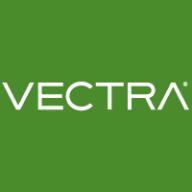![LogRhythm UEBA [EOL] Logo](https://images.peerspot.com/image/upload/c_scale,dpr_3.0,f_auto,q_100,w_64/JhFXMVCYzfCrAS3M9VeNUMi6.png?_a=BACAGSDL)

Vectra AI and LogRhythm UEBA compete in the threat detection and response category. Vectra AI appears to have the upper hand due to its advanced AI integration and alert consolidation capabilities.
Features: Vectra AI focuses on reducing alert fatigue by consolidating multiple alerts into a single incident, integrating AI for enhanced threat detection, and providing detailed insights into network behavior. LogRhythm UEBA, in contrast, prioritizes user behavior analytics using machine learning, dashboard usability, and seamless integration with existing security infrastructures.
Room for Improvement: Vectra AI users seek better integration with security products, improved false positive management, and more customization options. A broader focus on operational technology threats could be beneficial. LogRhythm UEBA could enhance data aggregation and machine learning capabilities and expand its use case library for improved detection efficiency.
Ease of Deployment and Customer Service: Vectra AI offers flexible deployment options across on-premises, public, and hybrid cloud environments and is praised for its responsive technical support. LogRhythm UEBA is mostly on-premises, with support effectiveness varying based on the service engineer, although generally considered responsive.
Pricing and ROI: Vectra AI is seen as expensive, with a complex licensing model but delivers significant ROI in high-security environments through improved detection and efficiency. LogRhythm UEBA is more budget-friendly, especially for small to medium businesses, though expensive compared to specific solutions, offering ROI by reducing security threat impacts and improving response times.


| Company Size | Count |
|---|---|
| Small Business | 4 |
| Midsize Enterprise | 4 |
| Large Enterprise | 3 |
| Company Size | Count |
|---|---|
| Small Business | 9 |
| Midsize Enterprise | 10 |
| Large Enterprise | 27 |
LogRhythm UEBA [EOL] offers advanced threat detection with an intuitive interface, utilizing correlation, behavior analysis, and machine learning to monitor server threats and privileged accounts effectively.
LogRhythm UEBA [EOL] provides comprehensive user behavior analytics and threat hunting capabilities, making use of customizable dashboards, reporting tools, file and registry monitoring. CloudAI adds depth by identifying unknown activities, enhancing network visibility and cyber risk reduction through constant monitoring. Users in Sri Lanka find it valuable for network stability, while other users leverage it for improved user monitoring and quick attack investigation. Despite its strong features, enhancements in integration, pricing in Asia, and documentation could improve its adoption.
What are the key features of LogRhythm UEBA [EOL]?In the financial sector, LogRhythm UEBA [EOL] is implemented to monitor privileged accounts and identify suspicious transactions swiftly. Healthcare organizations use it to safeguard sensitive patient data through behavior analysis. Manufacturing firms apply it to protect intellectual property and ensure compliance with industry regulations. Across these industries, the adaptability and analytics of LogRhythm UEBA [EOL] offer a strategic approach to cybersecurity management.
Vectra AI enhances security operations by pinpointing attack locations, correlating alerts, and providing in-depth visibility across attack lifecycles, ultimately prioritizing threats and improving incident responses.
Vectra AI integrates AI and machine learning to detect anomalies early and supports proactive threat response. Its features like risk scoring, alert correlation, and streamlined SOC efficiency are supplemented by integration with tools like Office 365. Users highlight integration, reporting, and customization challenges, alongside limitations in syslog data and false positive management. They seek enhancements in visualization, UI, TCP replay, endpoint visibility, and tool orchestration, with requests for improved documentation, licensing, and cloud processing innovation.
What are the key features of Vectra AI?In industries like finance, healthcare, and critical infrastructure, Vectra AI is crucial for threat detection and network monitoring. Entities use it for identifying anomalous behaviors and enhancing cybersecurity by responding to network activities and analyzing traffic for potential breaches. It operates on-premises and in hybrid cloud settings, enabling threat detection without endpoint agents and supporting compliance and policy enforcement.
We monitor all Extended Detection and Response (XDR) reviews to prevent fraudulent reviews and keep review quality high. We do not post reviews by company employees or direct competitors. We validate each review for authenticity via cross-reference with LinkedIn, and personal follow-up with the reviewer when necessary.